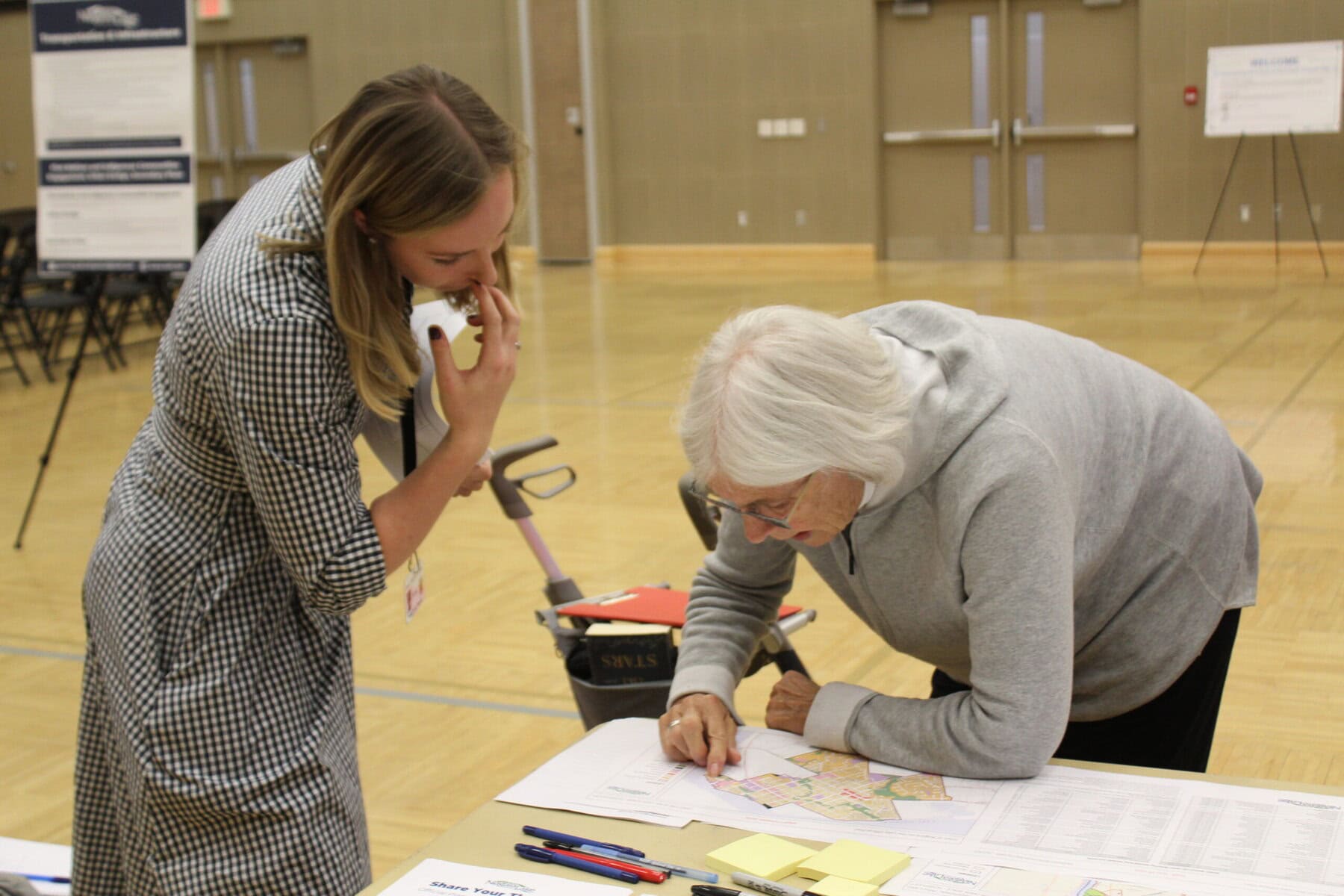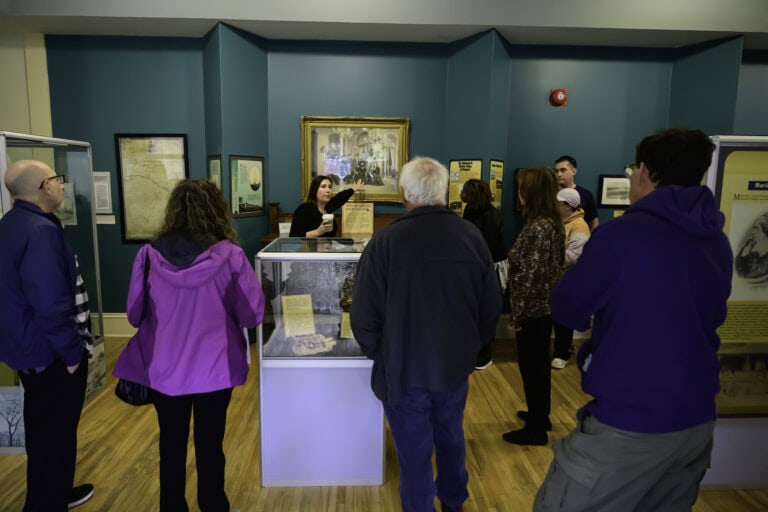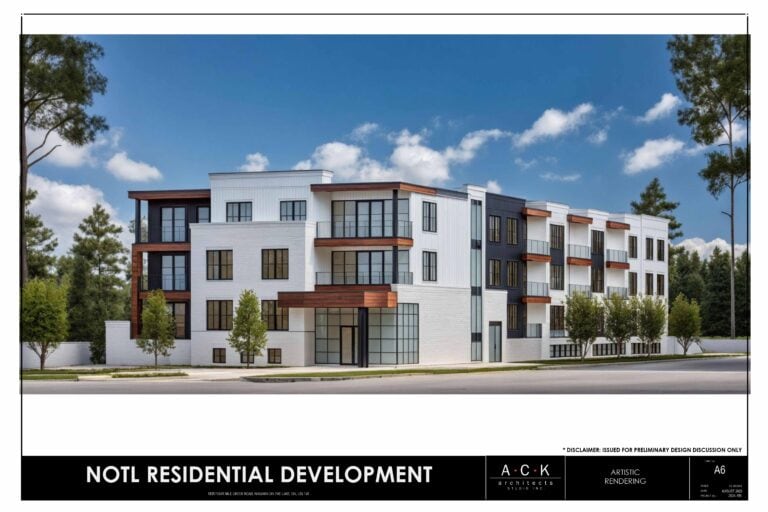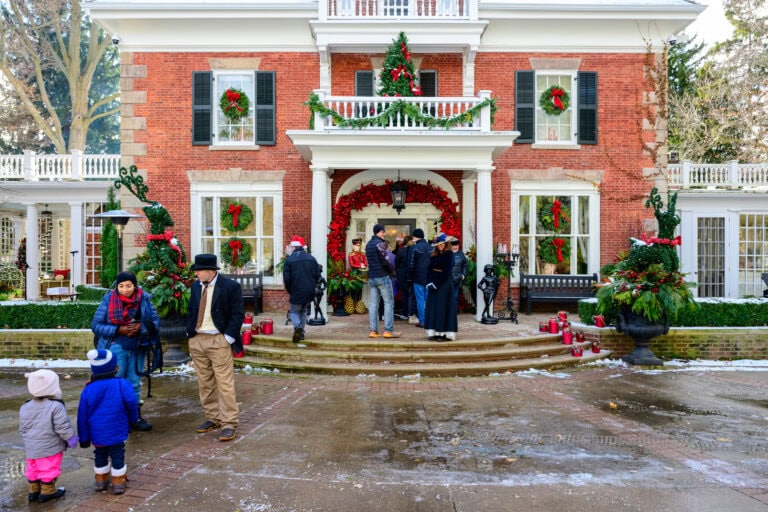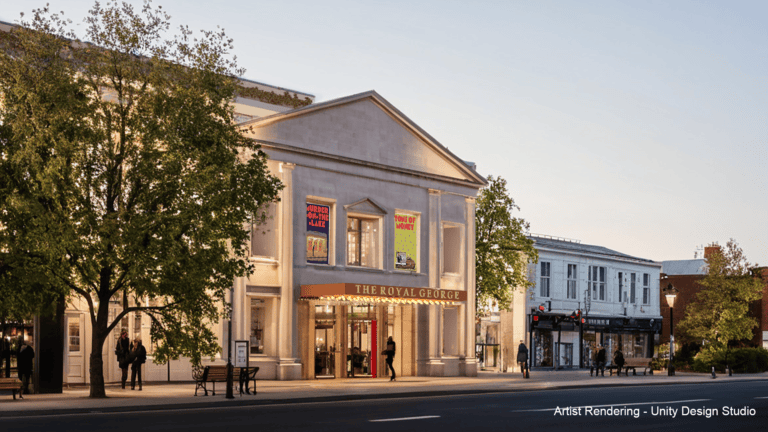It’s an almost-400-page document that’s going to guide the future of Niagara-on-the-Lake for the foreseeable future.
And on Wednesday and Thursday, it got dozens of residents out of their homes to learn what exactly it’s all about.
The Town of NOTL hosted a pair of open houses at the community centre to share the details of its updated official plan and hear what those living in the community have to say about the plan, which council expects to adopt early next year.
Town staff were on hand both days to present details, talks to attendees and hear feedback from them. Fiona Main, senior policy planner and one of the plan’s key architects, delivered a 15-minute presentation at each session, followed by a question-and-answer period.
Residents attended with varying levels of familiarity but shared an understanding of the plan’s scope and influence on town policy.
Tom Smith, who attended Wednesday’s session, said he had “very limited” familiarity with the plan and wanted a “basic” understanding of its purpose. He was particularly interested in zoning and property issues.
During the open houses, town staff were posted at stations to fill residents like him in on the details.
Among the topics of discussion was how the municipality is going to keep up with and manage Niagara-on-the-Lake’s growing population, with it expected to hit 28,900 by 2051, according to the official plan draft. The 2019 official plan’s population projections only went as far as 2031.
In the official plan draft, under growth management, it says the number of additional houses needed to accommodate this growth is 4,600, to be comprised of mainly single-detached and semi-detached houses, at 3,058 units, plus row housing and apartments.
The plan states that the town will direct the “vast majority” of this growth to NOTL’s settlement areas, with Glendale a “key focus” for development.
Town staff also went over topics like housing, climate change, cultural heritage, agriculture, transportation and infrastructure during the open houses.
The official plan, Main said, will lay the groundwork for how the town will adopt new policies. The new official plan is being updated to include guidelines from other plans the town has adopted since 2019, including those for climate change adaptation, transportation management and parks and recreation (that plan is being finalized this fall).
The town adopted Niagara Region’s latest official plan back in March, which exists beside the town’s 2019 plan.
“Essentially, we do have two official plans right now,” said Main.
The town’s main goal is to align its new plan as much as it can with the region’s, she said.
Two drafts have come out so far of the official plan, the first released in mid-July and the second at the start of October.
She said it’s unclear how many comments the town has received since the second draft’s release, as the feedback still needs to go through internal review.
“Transportation and infrastructure come a little later,” she said, adding that, “for the most part,” comments have been “reasonably spread out” by topic.
Norm Arsenault, a former town councillor and director at the NOTL Residents Association, was involved in developing the 2019 official plan. He said he attended to “find out what people are thinking.”
“I think we need to make sure that the language is fairly strong,” he said. “Sometimes I think the language can be a bit wishy-washy in that.”
Heritage preservation was the priority for resident Gracia Janes, who said she appreciated stronger language in the second draft but remained concerned about long-term protections.
“Even with the most strong planning that you have, how do you protect our heritage district?” she said.
Lidjia Biro, president of Seniors for Climate in Niagara, said she welcomed changes to environmental language in the second draft.
“They’ve changed some of the language to ‘shall,’ which is good,” she said.
Kassie Burns, the town’s climate change co-ordinator, was one of the town’s staff members speaking with residents during the open houses. She agreed that, as far as the environment goes, this draft is an improvement from the 2019 version.
“Prior to even the first draft of the official plan that was released, you wouldn’t see the terminology of climate change,” she said. “There weren’t actually really policies indicating anything about climate change.”
She described the updated words as more “definitive.”
Many attendees also came to learn more about the future of the former hospital site on Wellington Street, which was featured in the open house materials and was the subject of its own twin open houses this week.
Al Campagnola, who attended Thursday’s session, said he had little knowledge of the overall plan but was drawn by his interest in the Royal Oak School.
“It seemed to be extremely downplayed as a community school,” he said.
Resident Stan Harrington also said he was concerned about the former hospital site and noted the town’s lack of a high school.
Following Main’s presentation, both she and Kirsten McCauley, director of community and development services, took questions from the public.
A significant number of attendees at Wednesday’s event were from Chautauqua, a neighbourhood where residents have expressed concern about changes from the 2019 plan.
While the previous version committed to a secondary plan for the area, the 2025 draft allows for alternatives, such as a character study.
Resident Kate Sullivan questioned the effectiveness of these changes: “It’s vague,” she said.
McCauley pointed to site-specific policies for Chautauqua, which could include landscaping guidelines. She said these could eventually develop into a secondary plan but noted such plans are intensive and that protections could be achieved through other means.
During the second session, resident Scott Kirby asked about future development and population growth. McCauley pointed to Glendale as a key growth area.
“We want a mix of housing,” she said. “We need different housing options for different family sizes, different lifestyles, where you are in your life cycle — all of those things.”
The second draft includes sections on secondary plans for areas like Queen-Picton, Glendale and Chautauqua.
The town is updating its 2019 official plan to align with Niagara Region’s 2022 plan and Ontario’s 2024 planning statement.
A statutory public meeting is scheduled for November, with council expected to adopt the official plan in February.
The official plan serves as the town’s guiding policy document for managing population and job growth, agricultural land use, and secondary plans for key areas. It is reviewed every five years but can be amended by council in the interim.



